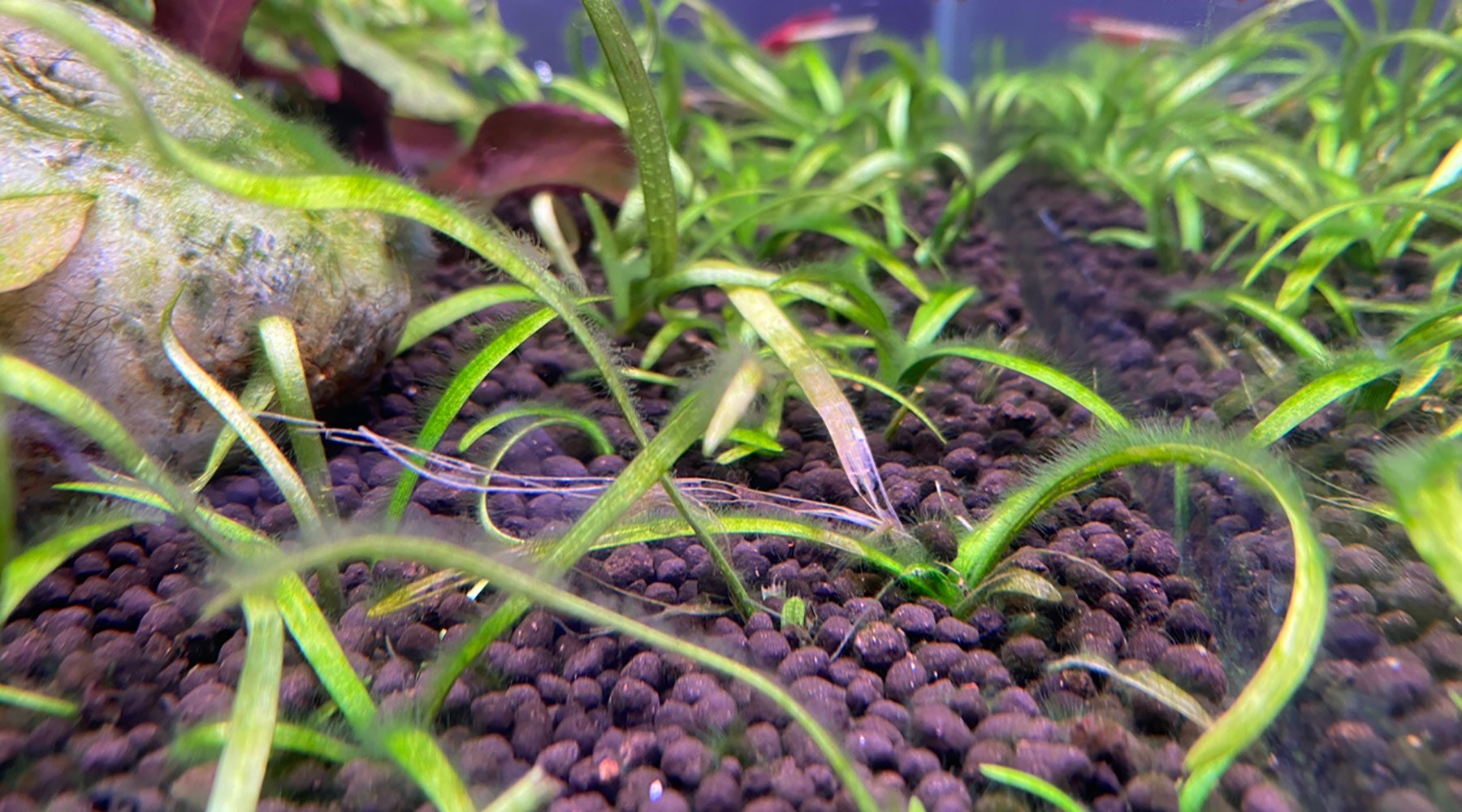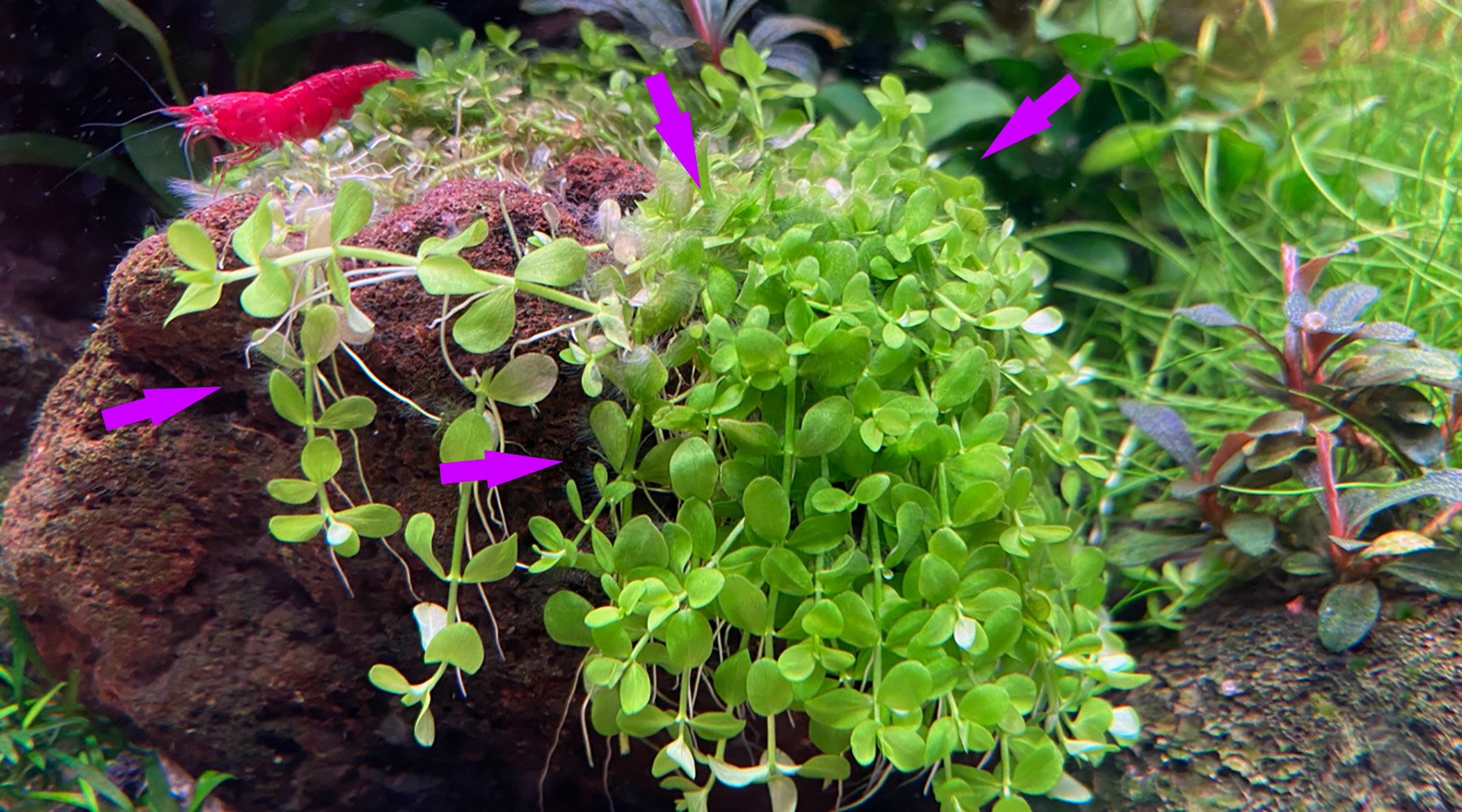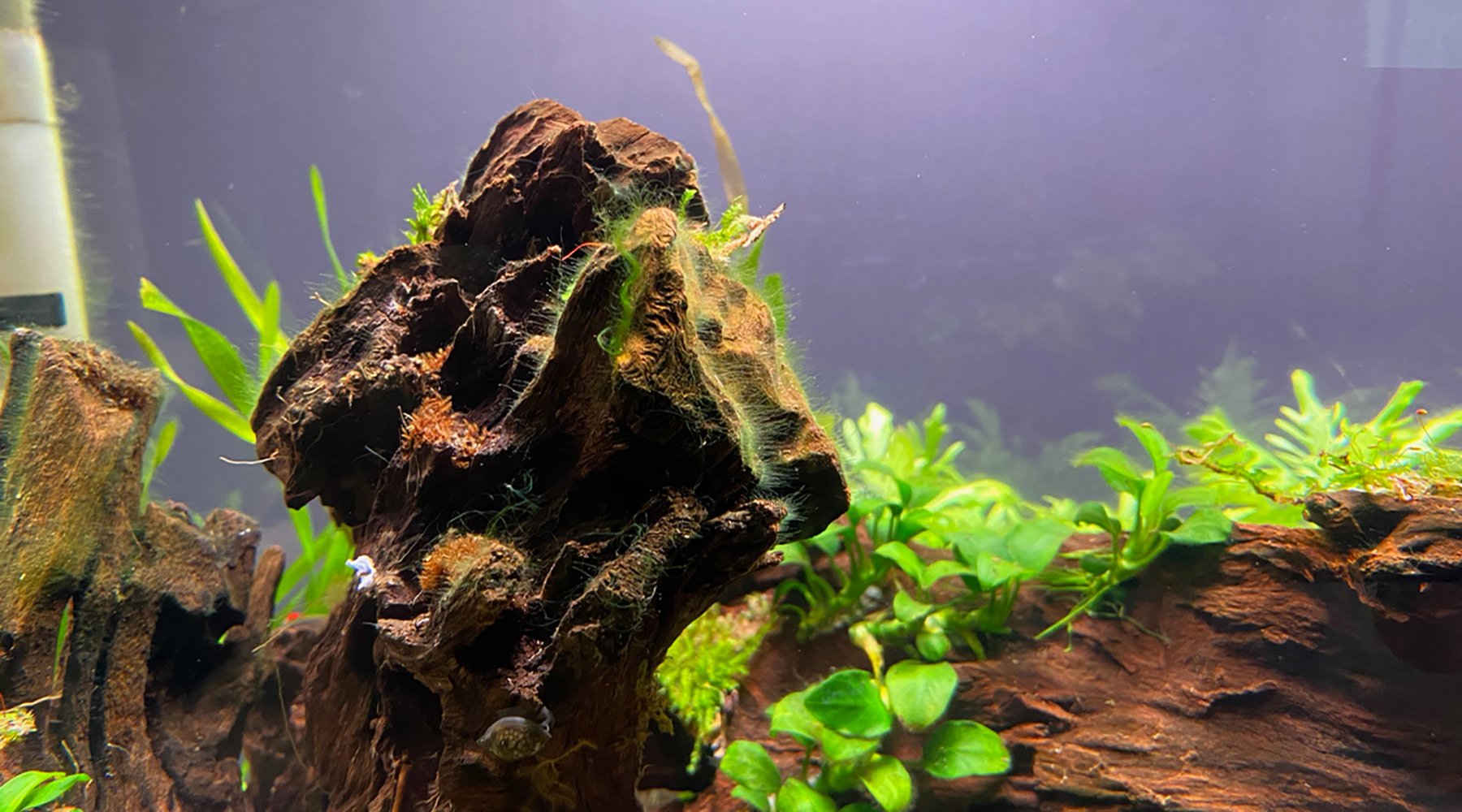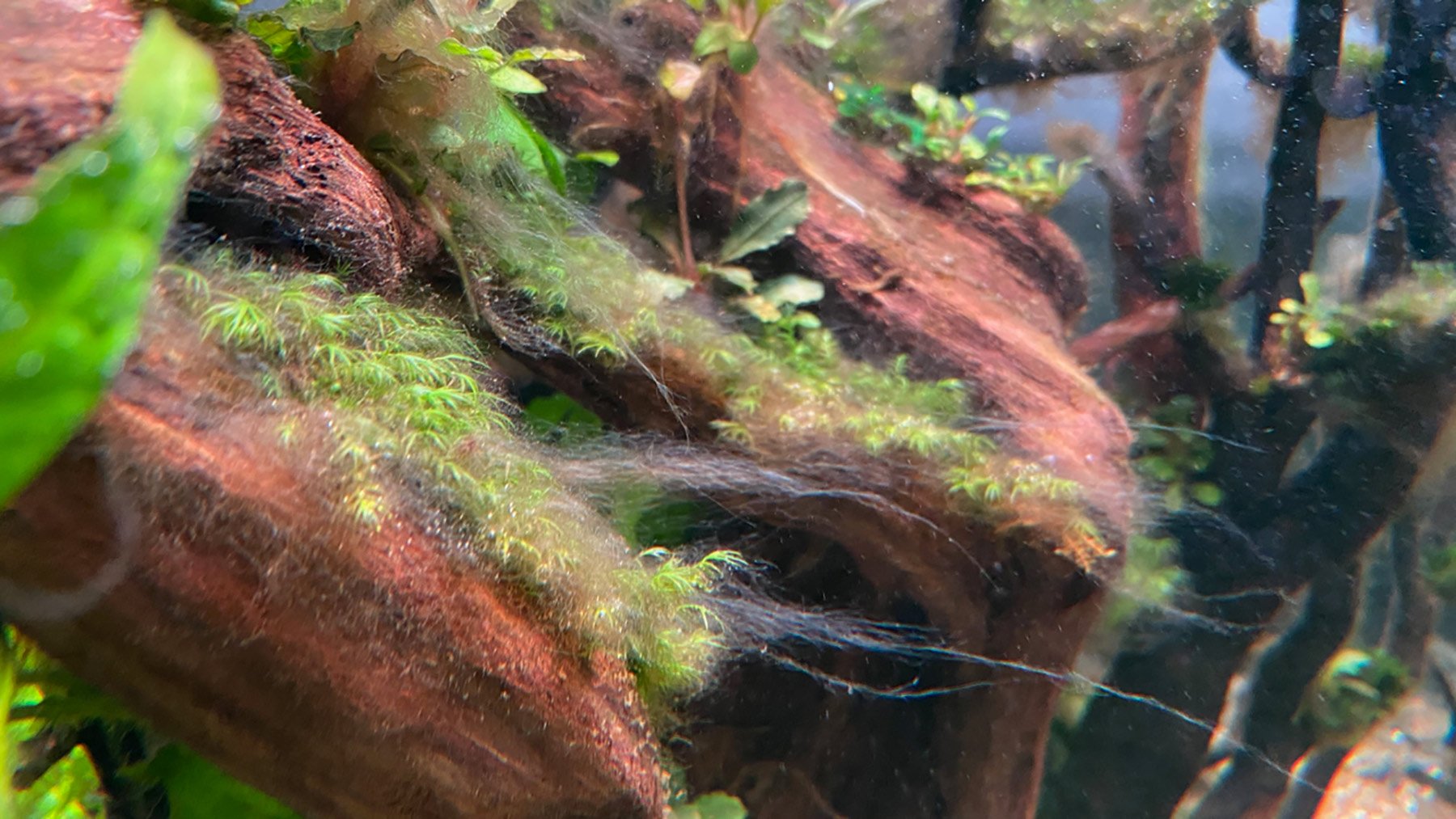
Today, we look at a common yet often misunderstood approach to algae on plants in newly planted tanks, such as the case in the picture above, where a hazy carpet of hair algae covers the newly planted Utricularia graminifolia. Another example below:
You are not wrong
Fundamentally, when algae preferentially attaches to plants (rather than hardscape), it is a sign that the plants are struggling.
Strong, healthy plants are very resilient to algae.
In a new tank (Often these are of the filamentous variety (hair / thread / stag horn etc.)
Such algae may suddenly appear even if the plants were initially algae free in the first 1 or 2 weeks after planting.
This can be triggered by many causes, but it is fundamentally linked to the plants still adapting to the tank environment.
Plants adapt by channeling their energy towards new leaves, so the newest leaves often remain algae-free while the older leaves get attacked by algae, as seen in the picture of the Monte Carlo below:
What not to do
Many hobbyists start wondering if something is wrong, and start making drastic changes.
This includes adding/ reducing nutrients, altering flow and/or CO2…or worse…start dosing algicides or DIY algae-treatment solutions…often making the problem more severe.
This is because, in simplistic terms, every change in the tank environment forces plants to reprogram their cells to adapt. For new plants already struggling to adapt to the tank, these additions, additives and alterations add to the challenge.
With new plants trying to ‘find their footing’, these changes are akin to constantly shaking the tank and throwing them off balance. Do enough of this and the plants can fail completely and succumb to algae.
In other words, the instinct to ‘adjust something’ is understandable but often counter-productive.
What should I do?
- If you have already ‘shaken the tank’ a little too much, the fastest path to recovery is probably (unfortunately) a reset. Remove the algae infested plants, and put in a new community. This is because while plants generally recover, badly algae infested plants that have been in unstable environments can take many weeks, even months to recover. This is too long for most hobbyists to stomach.When putting in new plants, it is important to attain ‘critical planted mass’. A rule of thumb is to cover at least 70% of the substrate with plants.
- Review plant choice. Do your plants fit the tank environment in the first place? Do they have enough light and CO2 for the selected species?Many plants look similar, but have vastly different needs, as we compare, for instance, HC Cuba and Monte Carlo.
Are you trying to grow softwater plants in hardwater (or vice versa?) - If the plants fit the environment, the best but hardest thing to do ( as we are all impatient) is to simply keep things stable (don’t fiddle around with changes in light, nutrition, flow) and give room for nature to work its magic.
For a tank with CO2 injection, it often takes 2-3 weeks for new plants to adapt. For tanks without CO2 injection, it takes much longer- 45 to 70 days is common and natural (as the pace of growth is 5X- 10X slower without injected CO2. No- ‘liquid CO2 doesn’t count).
This is a very long time- and the key reason why tanks without CO2 injection are in many way harder for beginners. It is like trying to build muscle with limited protein. Possible, but much harder.Observe new shoots- if they are healthy and algae free, it is a sign that the plants are progressing on the right path.As a rule, algae-infested leaves do not become un-infested.
Deteriorating leaves do not ‘heal’, unlike our skin.
Plants focus on growing new leaves instead.For stem plants, we would simply replant the healthy tops and discard the algae-infested lower portions after the healthy tops grow tall.
What about dosing anti-algae products?
If you have a Dutch-style tank, this is generally unnecessary, as fast-growers (with the right tank setup) almost always outcompete algae after a few weeks. Then, it is simply a matter of replanting the healthy tops and discarding the algae-infected older leaves/ stems.
However, spot-doing something like APT FIX would be helpful for slow growers such as Bucephalandra, Anubias, Alternanthera reineckii etc. as their old leaves can often recover (one of the secret advantages of slow growers) and new leaves take many days, even weeks, to develop.
Above: It is also fine to spot-dose on hardscape / wood to remove algae. We avoid pouring anti-algae agents directly into the tank because they are typically effective only at higher concentrations, and at those levels, we risk damaging the fragile and important microbial community that is a important part of achieving tank stability.
Diatoms can arise from planting before the tank was fully cycled.
While they look nasty, experienced aquarists know that they are actually rather benign and disappear quickly after the tank stabilises.
In general we should not need to use use algae-treatment products on Diatoms.



